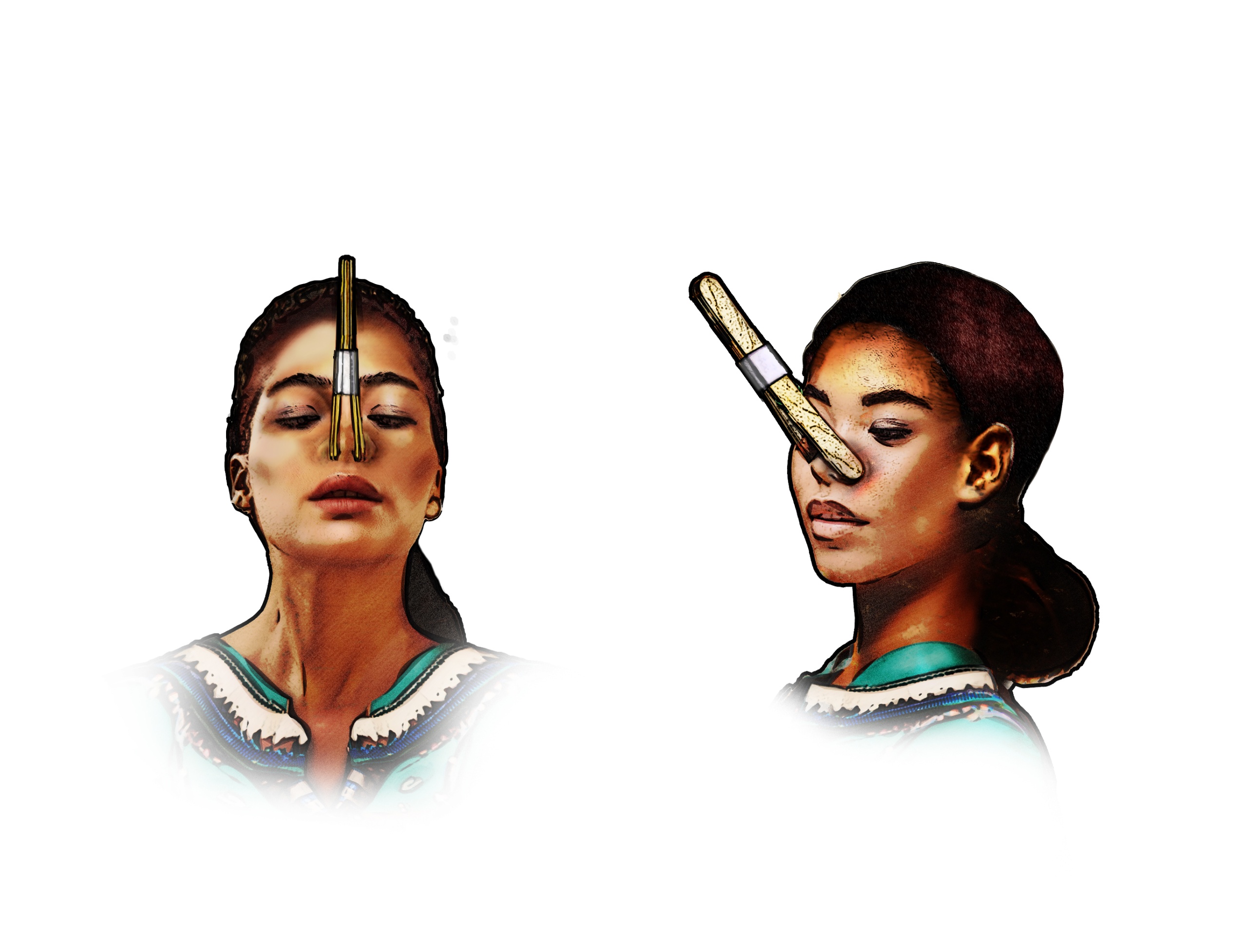
Treat Nosebleed with Tongue Depressors in an Urgent Situation
Merck Manual

This iillustration demonstrates 2 views of the best method to stop a nosebleed. Four tongue depressors that have been taped together in order to create a makeshift nasal clip to stop a nosebleed (epistaxis). The clip and had angle shown prevent further bleeding by using external pressure to prevent further bleeding of the plexus of vessels in the anterior interior septum.
I illustrated this image for Merck in 2023 for their online Merck Manual, The Merck Manual (The Merck Manual of Diagnosis and Therapy), which has an interesting history. It was first published in 1899 as a public service primarily for medical students. The book has been in continuous publication, with its online version having proven particularly useful for medial health professionals all over the world.
View this illustration in the Merck Manual:
Notes about the Topic
This is for informational purposes only. For medical advice or diagnosis, consult a professional.
While tongue depressors are not a typical first-line treatment for nosebleeds, they can be used to create a makeshift nasal clip that applies direct pressure to the nostrils, which is the standard method for stopping a nosebleed. Here’s how:
- Gather materials: You’ll need four tongue depressors and medical tape.
- Assemble the clip: Lay two tongue depressors flat on top of each other. Securely tape them together at both ends. Repeat with the remaining two tongue depressors.
- Position the clip: Gently place the taped tongue depressors on either side of the nose, ensuring the soft tissue of the nostrils (alae) is compressed between them.
- Apply pressure: Hold the clip in place for at least 10 minutes.
Important Considerations:
- This method is not ideal: Using tongue depressors may not provide enough consistent pressure compared to simply pinching the nostrils with your fingers. But if there are no other tools at hand, it can be useful.
- Seek medical attention: If the bleeding is severe, doesn’t stop after 20 minutes, or you experience dizziness or lightheadedness, seek immediate medical attention.


